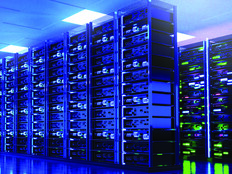Szykman says there are some agencies using all of those foundational elements, and some are looking to use them more than they currently are. Other agencies are still in the “investigation and exploration” phase of using them, he says. “Certainly, there are pockets where every one of those is in full use and growing,” he says.
“Agencies are getting better at adopting new technologies, which in turn contributes to enabling the workforce as well as an increased ability to deliver on the mission,” the report notes. “Core services, business and mission are more interconnected, as are agencies and the citizens they serve. People inside and outside of the government IT community are paying more attention to technology as they see the value it offers.”
READ MORE: Find out what existing technology policies will probably transition into the Biden administration.
Real-World Barriers to Innovation Remain
Despite that progress, and the Biden administration’s early signaling that it is pushing for billions of dollars in funding for IT modernization, there are still obstacles to progress.
One of those is budgetary, and the report notes that “continuing resolutions and budget disruptions affect IT modernization in terms of how CIOs make decisions in the short-term versus the long-term.”
There is also “a need for consistency in federal hiring practices for a skilled workforce that targets candidates with experience and skills in emerging technologies and critical decision-making abilities,” the report notes.
Notably, the report points out that “change management and changing peoples’ behaviors are essential to overcoming culture-related obstacles.”
PSC President and CEO David Berteau tells FedTech that agencies, like the rest of the country, are still in the middle of the pandemic and are in the process of figuring out what the workplace and structure of work will look like in the future.
The Biden administration’s IT modernization funding proposal — which includes $9 billion for the Technology Modernization Fund and $300 million in funding for GSA’s Technology Transformation Services — signals two key things. One is a “recognition that the government’s internal infrastructure” is in “serious need of additional attention,” and that modernization can help the government respond better to get the pandemic under control.
IT modernization projects, Berteau says, should be driven by “the nature of the work and the workforce” and not simply what is next on a modernization checklist. “If you do that, you’ll be reverting to a pre-pandemic mindset,” he says.
“Agency CIOs recognize that plans made years ago may need to be set aside, and you need to respond to the exigencies of the moment,” he says. “But there comes a point in time, and we’re getting close to it, where you say, ‘What will our needs be for the future of work?’ And you have a chance to shape that.”
This spring, the Biden administration will put forth a budget proposal for fiscal year 2022, which starts Oct. 1, and there will be a lot of haggling over the spending ceiling, since there is no statutory budget cap for FY 2022.
What may make modernization easier, Szykman says, is that many incoming CIOs are likely going to be people with government experience who won’t need to be convinced of the need for IT upgrades. They will want to use technology to improve citizen services and the customer experience, get less duplication and more efficiency, he says.
A key challenge within agencies, Berteau says, will be getting career staffers on board with modernization projects that may upend how an agency operates. “In my experience, all of the issues around modernizing legacy systems, whether it be IT systems or other operations, is that the past is generally stronger than the future. Everybody who is doing the past stuff knows who they are, and they all worry about, ‘What if I lose in this process?’” he says. “Whereas the beneficiaries aren’t as well identified or organized, and may not even know who they are.”












